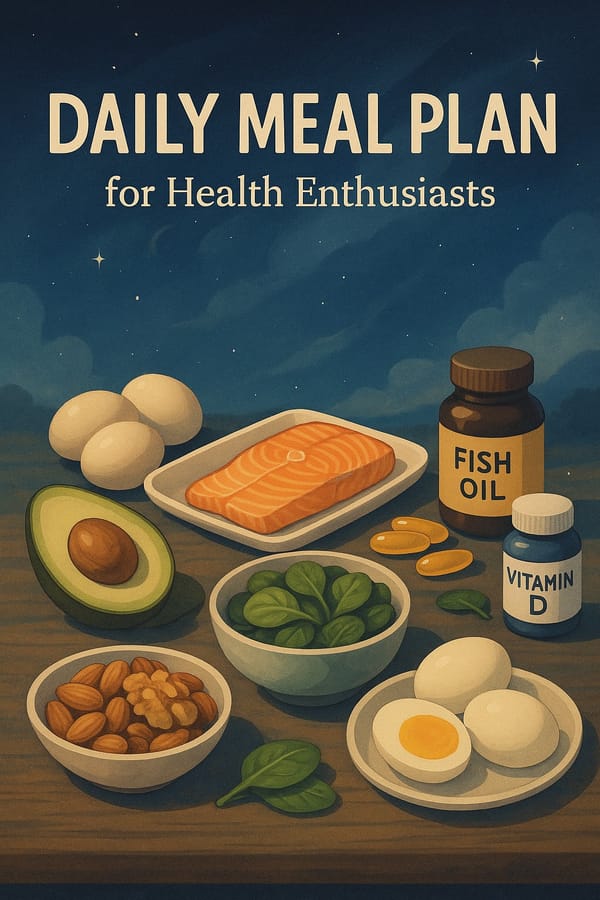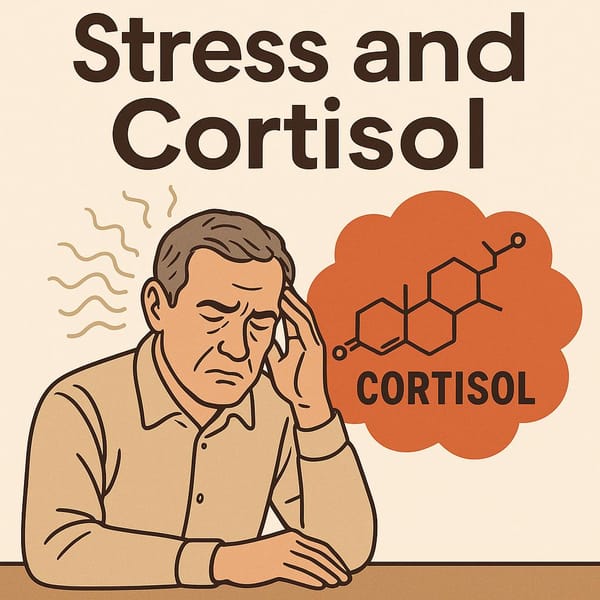How to Build Muscle Mass for 50+ to Combat Age-Related Muscle Loss
Looking to gain at least 0.5% muscle mass per month for the 50+ age group? Learn how to fight muscle loss with this comprehensive guide on exercise programs, nutrition, and essential health tips.

Introduction
Have you noticed a gradual decline in your muscle strength as you age? This phenomenon, known as Sarcopenia, becomes particularly apparent after turning 50. Not only does it affect physical strength, but it also impacts mobility, bone health, joint function, and overall well-being.
The good news is that you can counteract these changes! Research shows that appropriate exercise routines and nutrition can indeed foster muscle growth. Even a modest goal like gaining 0.5% muscle per month can significantly improve your health in the long run. In this article, we’ll explore the root causes of age-related muscle decline, along with effective exercise programs and dietary choices to help maintain muscle strength and vitality.
Note: The information presented here references reputable sources such as the World Health Organization (WHO) and Harvard Health. Always consult with a physician or physical therapist before starting any new workout regimen.
Table of Contents
- Why Muscle Mass Changes After 50
- Importance of Maintaining Muscle Mass
- Is a 0.5% Monthly Muscle Gain Realistic?
- Choosing the Right Exercise Routine for 50+
- 4.1 Weight Training (Resistance Training)
- 4.2 Weekly Strength Training Schedule
- 4.3 Endurance and Cardio
- 4.4 Low-Impact Options
- Key Nutrition for Muscle Growth
- 5.1 Protein
- 5.2 Carbs, Fats, and Micronutrients
- 5.3 Supplements and Vitamins
- Lifestyle Tips for Better Results
- 6.1 Sleep and Recovery
- 6.2 Stress Management
- 6.3 Health Checkups
- Sample Meal Plan & 4-Week Workout Program
- Precautions and Additional Recommendations
- Conclusion
1. Why Muscle Mass Changes After 50
As we get older, our bodies naturally lose muscle mass. From around age 30, muscle breakdown slowly starts to increase while our protein synthesis rate decreases. Factors such as hormone changes (e.g., decreased testosterone, growth hormone), a slowing nervous system, and reduced physical activity levels all play a role.
This decline leads to an increased risk of falls, injuries, reduced mobility, and potential long-term issues like osteoporosis if not managed properly. Therefore, building and maintaining muscle mass is a vital component of overall health for those over 50.
2. Importance of Maintaining Muscle Mass
- Daily Functional Strength: Sufficient muscle mass helps you carry out everyday tasks like standing, walking, climbing stairs, and lifting objects safely.
- Energy Metabolism: Muscle tissue burns more calories even at rest. The more muscle you have, the higher your basal metabolic rate.
- Reduced Risk of Falls and Injuries: Strong muscles and core stability improve balance, decreasing the likelihood of falls.
- Bone Health: Weight-bearing exercises stimulate bone density, reducing the risk of osteoporosis.
- Mental Well-Being: Exercise and stronger muscles can help release endorphins and other neurotransmitters, reducing stress and improving mood.
3. Is a 0.5% Monthly Muscle Gain Realistic?
Gaining about 0.5% muscle per month might seem small, but over 6–12 months, it adds up to significant improvements. Research suggests that consistent exercise and proper nutrition can make this goal achievable.
- University Study: Participants aged 50–65 who performed resistance training three times a week for three months increased muscle strength by 25–30%, with an average muscle mass gain of 0.5–1.0% per month.
- Expert Guidelines: Organizations like the American College of Sports Medicine (ACSM) highlight the importance of regular strength training and adequate nutrition for older adults.
In short, 0.5% monthly growth is both safe and effective.
4. Choosing the Right Exercise Routine for 50+
Safety and suitability are key. Your routine should focus on muscle building and strength while considering joint health and cardiovascular support.
4.1 Weight Training (Resistance Training)
Resistance training, such as lifting weights or using resistance bands, is critical for stimulating muscle synthesis. Start with lighter loads—like dumbbells or bands—and gradually increase as you get stronger.
- Benefits:
- Boosts protein synthesis in muscles
- Strengthens bones and joints
- Improves balance and flexibility
4.2 Weekly Strength Training Schedule
Target each major muscle group while allowing at least 48 hours of rest before working the same group again.
- Example (3 days/week)
- Monday: Upper body (chest, back, shoulders)
- Warm-up (5–10 min): Easy walk, stationary bike, shoulder rotations
- Push-ups (3 sets × 10–12 reps): Modify using a wall or bench if needed
- Dumbbell Row (3 sets × 10–12 reps): Focus on back and arms
- Shoulder Press (3 sets × 10–12 reps): Use dumbbells or bands for shoulders and arms
- Optional: Light ab work (Sit-ups, Crunches)
- Wednesday: Lower body (legs, glutes)
- Warm-up (5–10 min): Walking, light cycling
- Squats (3 sets × 10–12 reps): Adjust depth or use a chair for support
- Lunges (3 sets × 8–10 reps per leg): Chair support for balance if necessary
- Glute Bridge (3 sets × 10–12 reps): Targets glutes and lower back
- Calf Raises (2 sets × 15 reps): Strengthens calves and ankles
- Friday: Core & Auxiliary Muscles (abs, arms)
- Warm-up (5–10 min): Shoulder, elbow, wrist rotations, gentle ab stretches
- Plank (3 sets × 30–45 sec): Adjust duration as needed
- Bicep Curls (3 sets × 10–12 reps): Use moderate weights or bands
- Tricep Dips (3 sets × 10–12 reps): Use a stable chair or bench
- Side Plank (2 sets × 30 sec each side): Improves lateral core strength
- Monday: Upper body (chest, back, shoulders)
Always cool down with a 5–10 minute stretch routine.
4.3 Endurance and Cardio
Activities like brisk walking, swimming, biking, or low-impact aerobics:
- Boost heart and circulatory health
- Help burn excess fat
- Improve endurance
- Aid recovery between weight training sessions
Aim for 20–30 minutes of moderate-intensity cardio 2–3 times a week if you’re 50+.
4.4 Low-Impact Options
For those with joint issues, low-impact exercises—such as yoga, Pilates, Tai Chi, or swimming—may be more suitable, as they minimize stress on the joints while improving flexibility and balance.
5. Key Nutrition for Muscle Growth
Exercise alone isn’t enough; proper protein and other nutrients are essential.
5.1 Protein
Protein is the building block for muscle tissue. A daily intake of 1.2–1.5 g per kg of body weight is often recommended for muscle gain, potentially increasing to 1.5–1.8 g for older adults, depending on exercise intensity and health status.
- High-Quality Protein Sources: Egg whites, lean meats, fish, legumes, tofu, or supplements (whey, plant-based).
- Pro Tip: Spread your protein intake evenly across meals.
5.2 Carbs, Fats, and Micronutrients
- Carbs: Provide energy during workouts and help stabilize blood sugar. Choose complex carbs like brown rice, whole wheat bread, fruits, and vegetables.
- Healthy Fats: Opt for unsaturated fats like olive oil, avocados, nuts, and fatty fish (e.g., salmon).
- Vitamins & Minerals: Magnesium, calcium, vitamin D, and B vitamins support muscle and bone health.
5.3 Supplements and Vitamins
- Whey Protein: Convenient if your diet alone doesn’t meet protein needs.
- Creatine: May help increase strength and muscle mass.
- Vitamin D: Aids calcium absorption and bone health.
- Fish Oil: Omega-3 fatty acids support heart health and reduce inflammation.
Recommended Resource: National Institute on Aging for age-specific nutrition guidelines.
6. Lifestyle Tips for Better Results
6.1 Sleep and Recovery
Muscle repair occurs during sleep, so 7–9 hours of quality sleep per night is crucial.
6.2 Stress Management
Chronic stress elevates cortisol levels, inhibiting muscle building. Try meditation, yoga, or other relaxation techniques.
6.3 Health Checkups
Regular health screenings help track muscle mass, bone density, and overall fitness. Tools like Bioelectrical Impedance Analysis or DEXA scans can monitor progress.
7. Sample Meal Plan & 4-Week Workout Program
Sample Meal Plan
- Breakfast
- 2 scrambled egg whites + 1 slice whole wheat toast + side salad
- Black coffee or unsweetened tea
- Late Morning Snack
- Low-fat yogurt + mixed berries
- Lunch
- Grilled chicken breast + 1 cup brown rice + steamed vegetables
- Afternoon Snack
- Whey protein shake (or protein-rich snacks like nuts)
- Dinner
- Grilled salmon + sautéed vegetables (olive oil) + whole grains
Customize based on personal preferences and dietary needs.
4-Week Workout Program
Weeks 1–2:
- Monday: Light-to-moderate upper body weight training
- Tuesday: 30-minute brisk walk
- Wednesday: Light-to-moderate lower body weight training
- Thursday: Rest or gentle yoga
- Friday: Light-to-moderate core + arms
- Saturday: 30-minute bike ride or swim
- Sunday: Rest
Weeks 3–4:
- Increase resistance or weight by 10–15%
- Extend cardio session to 40 minutes on Tuesday or Saturday
- Maintain adequate rest, increase daily protein intake by 10–20%
After 4 weeks, evaluate your progress. If you feel stronger, gradually increase resistance and adjust the schedule as needed to continue building muscle.
8. Precautions and Additional Recommendations
- Consult a Doctor First: Especially if you have conditions like hypertension, diabetes, heart disease, or joint issues.
- Warm Up & Cool Down: Prevent injuries and reduce lactic acid buildup.
- Choose Appropriate Weights: Start light and progress gradually.
- Stay Consistent: Results require ongoing effort and a health-conscious lifestyle.
9. Conclusion
Age-related muscle decline is inevitable, but a well-structured workout and nutrition plan can help you fight back. Gaining even 0.5% muscle per month can significantly impact your health—reducing fall risks, strengthening bones, and enhancing overall quality of life.
Focus on the right exercises, prioritize rest, manage stress, and maintain a diet high in quality protein and essential nutrients. With commitment, it’s entirely possible to keep your body strong and resilient well into your 50s and beyond.
We hope this guide helps you on your journey to maintaining muscle mass and mitigating the effects of age-related muscle loss. Always consult health professionals if you have any concerns.
References
- Harvard Health Publishing. (n.d.). Strength and Power Training for Older Adults. Link
- American College of Sports Medicine. (n.d.). ACSM Guidelines for Exercise Testing and Prescription.
- National Institute on Aging. (n.d.). Exercise & Physical Activity for Older Adults. Link
- World Health Organization. (n.d.). WHO – Physical Activity Guidelines
Stay strong and healthy on your muscle-building journey!



